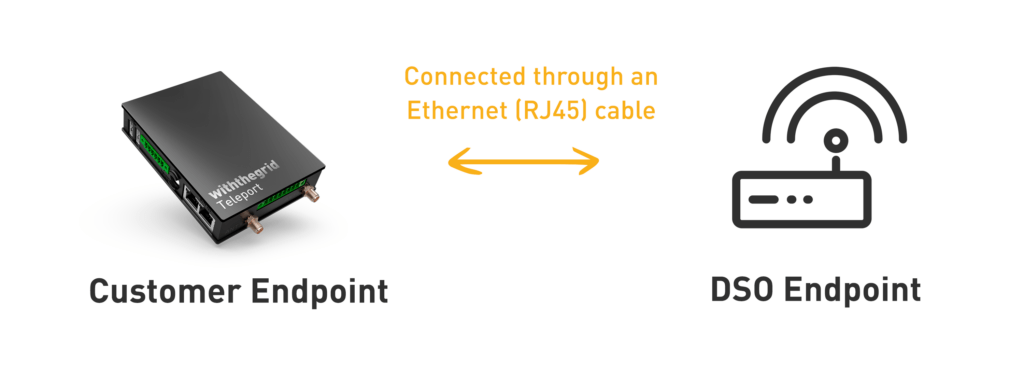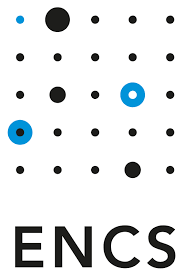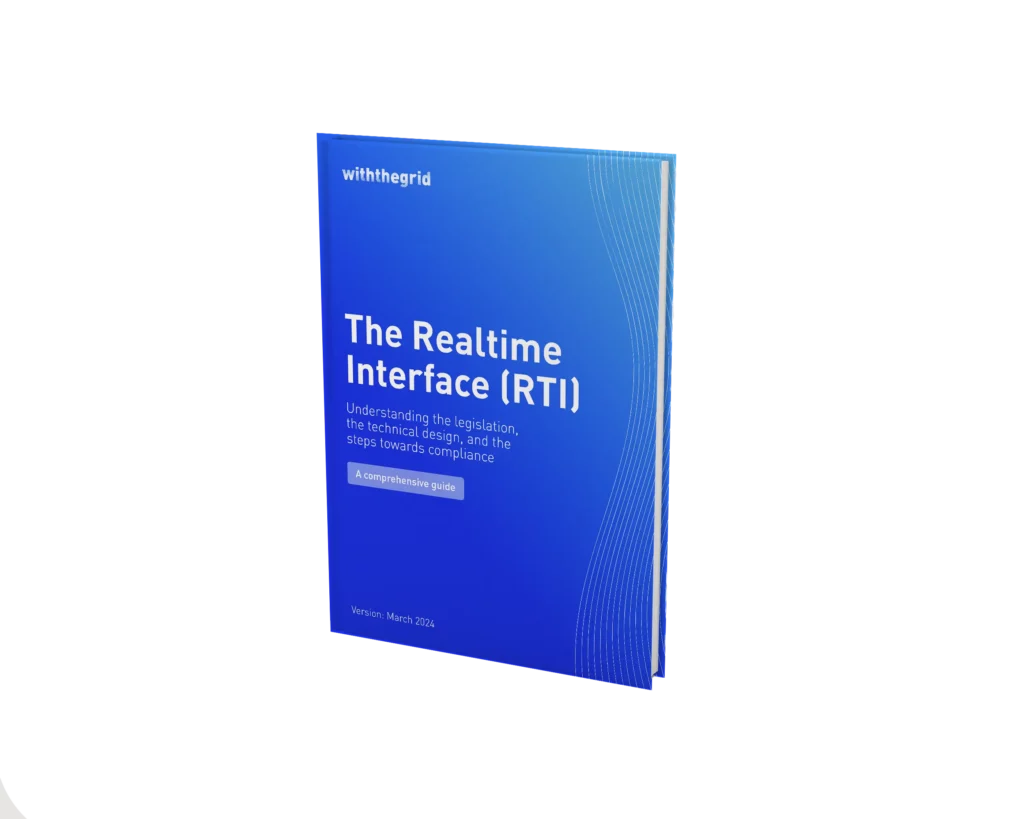Home → Blog → Real-time Interface → Technical overview of the Real-time Interface
By
Anaïs Wampack
Published on:
02/10/2023
In the ever-evolving energy landscape, the integration of renewable energy sources is redefining the way we generate and distribute electricity. To navigate this transformation successfully, the Real-time Interface (RTI) has emerged in the Netherlands as a critical tool for grid operators and energy market participants.
But what exactly is the Real-Time Interface, and how does it work?
In this second part of our series “A Comprehensive Guide to Real-time Interface”, we’ll break down this complex concept, highlight the Real-Time Interface’s technical workings, connectivity, cybersecurity, and its pivotal role in facilitating the energy transition.
I. Technical foundations of the Real-time Interface
At its core, the Real-Time Interface (RTI) is a technical framework that enables seamless communication and coordination between electricity generators and grid operators. It acts as a bridge, allowing both parties to collaborate effectively to ensure the efficient use of transmission capacity while maintaining the reliability and safety of the electricity grid.
1. Connecting the dots
Customer endpoint and DSO endpoint
The Real-Time Interface relies on two key components: the customer endpoint and the Distribution System Operator (DSO) endpoint. These endpoints serve as the interface’s communication nodes, facilitating the exchange of critical information.

- Customer endpoint: This is the component installed by the connected party (typically a generator or renewable energy asset owner). The customer endpoint receives control signals from the DSO endpoint and processes them in accordance with the international standard IEC-61850. It acts as the link between the grid operator’s instructions and the generation installation’s control system.
- DSO endpoint: The DSO endpoint, on the other hand, is the counterpart installed and maintained by the grid operator. It serves as the point of contact with the customer endpoint, enabling two-way communication. The DSO endpoint sends critical grid information, such as congestion signals or balancing market instructions, to the customer endpoint.
2. Keeping things secure
Given the critical role the Real-Time Interface plays in grid management, ensuring the security and integrity of the interface is vital. Here are the cybersecurity measures in place:
- Strong passwords: The RTI system mandates the use of unique and robust passwords, following NIST SP 800-63B guidelines. This prevents unauthorized access.
- Security updates: There is a defined process for implementing security updates remotely on the real-time interface. This process includes monitoring vulnerability lists, manufacturer notifications, and new release notes. Patches and updates are implemented promptly after compatibility testing to address potential vulnerabilities.
- Cybersecurity training: Administrators of customer endpoints undergo cybersecurity training to ensure they are well-versed in best practices for securing the interface.
- ISO 27001 compliance: To enhance data protection, ISO 27001 compliance is desirable. This internationally recognized standard sets stringent requirements for information security management systems, further safeguarding the RTI.
- European Network for Cybersecurity (ENCS) standards: Additional cybersecurity requirements, as specified by the European Network for Cybersecurity, are also considered to ensure the RTI’s robustness against cyber threats.


II. How the Real-time Interface works
Now that we’ve explored the technical components and cybersecurity measures, let’s delve into how the Real-time Interface works in practice:
1. Getting measurements data
The functionality of the RTI revolves around reading critical measurements (power and voltages) at the transfer point of the generation installation (sometimes called: point of common coupling). These measurements include:
- Active power: The RTI continuously monitors the active power output of the generation installation, measured in megawatts (MW).
- Reactive power: Another crucial parameter it tracks is the reactive power, measured in megavars (MVAr).
- Voltage: The voltage across all phases in kilovolts (kV) is measured to ensure grid stability.
- Current: Current values on all phases in amperes (A) are also monitored to maintain operational safety.
Those measurement data are requested by the DSO endpoint and sent to the grid operator.
2. Taking control when needed
The RTI is not just about data collection; it actively participates in grid management by processing control commands, known as setpoints. These setpoints are critical for real-time adjustments and include:
- Limiting power: The RTI can limit the generation installation’s power output, both as a percentage of the contracted capacity and as an absolute value in megawatts (MW).
- Explaining why: For transparency and traceability, setpoints are accompanied by reason codes, providing insights into why a particular control action was initiated.
There are also possible other technical applications, but it is not in scope of the RTI yet:
- Keeping power usage in check: he interface can restrict the amount of power consumed, expressed in absolute MW.
- Helping with grid stability: The RTI can manage reactive power, expressed in megavars (MVAr).
3. Safety first
In the event of communication failure between the Customer Endpoint and the DSO Endpoint, a predefined safe-mode operation is activated. This mode ensures that generated power is curtailed to a configured level to prevent grid instability or overload. The grid operator can remotely set safe-mode parameters, specifying the maximum allowable power output and time to apply the safe-mode after a communication failure. The customer endpoint will store measurements up to 8 hours in case of communication failure. When communication starts up again, it will send those hours of measurements to the DSO endpoint.
4. Communication frequency
The RTI defines the frequency of data transmission between the Customer Endpoint and the DSO Endpoint. Reports are sent periodically to ensure that measurements remain accurate. Additionally, the RTI can transmit data whenever there is a significant change in measurements, such as power or voltage fluctuations.
5. Availability and fast response times
To maintain grid stability, the Customer Endpoint must have a high availability rate, exceeding 99% over a six-month period. This ensures that the RTI is operational when needed most. Furthermore, communication between endpoints must not exceed four seconds, ensuring rapid response to grid events.
III. Real-time Interface implementation
1. New generation installations
Initially, the focus of the RTI is on new generation installations between 1 and 50 MW (the so-called category B in the NC RfG) in areas with existing or impending grid congestion in the Netherlands.
2. Ownership and responsibility
In terms of ownership, everything from the grid up to the transfer point of the connection belongs to the grid operator. Beyond this point, within the connection, is the responsibility of the generator or connected party. This arrangement ensures that the generator provides a functioning Customer Endpoint.
3. Compatibility with existing systems
The RTI is designed to be compatible with a wide range of generation installations, including older systems. Many photovoltaic (PV) inverters, even older models, are equipped to receive and process control commands through standard communication protocols. The RTI, through the Customer Endpoint, seamlessly integrates with these existing systems.
IV. Withthegrid’s Teleport: leading the way in Real-time Interface compliance
Withthegrid’s Teleport is the first customer endpoint with RTI functionality. It meets all legal requirements and was developed together with the Dutch grid operators. The Teleport stands out in several ways:
- Compatibility with diverse assets: The Teleport is compatible with over 200 asset protocols, making it adaptable to a wide range of PV park controllers, wind turbine systems and battery systems. This versatility ensures seamless integration with various energy assets.
- Security and encryption: Withthegrid’s Teleport prioritizes security with European-grade encryption and security measures. Its design ensures that there are no inbound communication channels, further safeguarding against unauthorized access.
- Easy Installation: The Teleport is designed for straightforward installation in a logical and secure location within the energy infrastructure. Its ease of integration ensures minimal disruption during deployment.
The Teleport has already been used by leading parties to monitor and control assets for imbalance markets, intraday trading, FCR and to comply with the real-time interface requirement. Want to know more about it? Visit the Teleport webpage.
V. Conclusion: empowering the energy transition
In a world where sustainable energy sources are redefining the energy landscape, the Real-Time Interface emerges as a pivotal tool for grid management. Its technical complexities, strong cybersecurity measures, and real-time capabilities will make it the cornerstone of Dutch grid operations.
As the energy transition continues to gather momentum, the Real-Time Interface, exemplified by solutions like the Teleport, ensures the efficient and secure integration of renewable energy sources into our electricity grids. With the right tools and knowledge, the energy industry can embrace this evolution and contribute to a greener future for all.
For a more comprehensive understanding of the legislative background and grid challenges that led to the development of Real-Time Interface, you can refer to the article “Real-Time Interface: Understanding Grid Challenges with EU and Dutch Legislations.”

Want to know more about the Real-time Interface?
Download our whitepaper.
Find all relevant information in one place.


